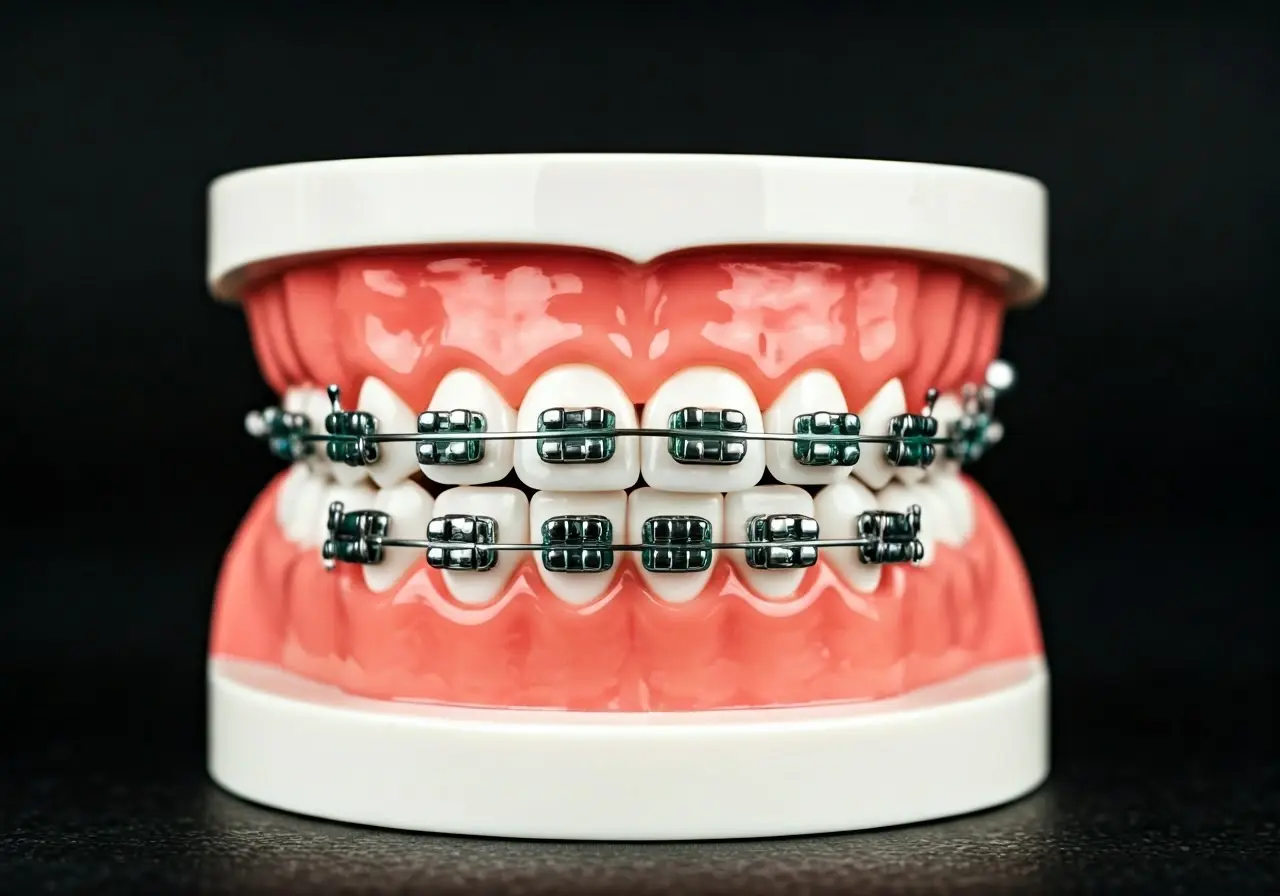10 Things You Should Know About Adult Orthodontics
Are you considering adult orthodontics but not sure where to start? You’re not alone! Orthodontic treatment isn’t just for kids and teens anymore. With advances in technology and a growing awareness of dental health, more adults are opting for orthodontic treatments. Here are ten essential things you should know before taking the plunge into adult orthodontics, to help make your journey as smooth as possible.
1. Why More Adults Are Seeking Orthodontic Treatment
In the past, orthodontics was seen primarily as a rite of passage for teenagers. Today, however, that perception has shifted significantly. Many adults are seeking orthodontic treatment, not just for aesthetic reasons, but also for health benefits. According to Smile Experience Orthodontics, 1 in 4 orthodontic patients is now an adult seeking orthodontic treatment. This shift is primarily driven by the desire for a more confident smile and a deeper understanding of the link between oral health and overall wellness.
Adults have come to realize that a straight smile can do wonders for personal and professional life. Having well-aligned teeth can improve confidence and leave positive impressions. With an increased life expectancy, adults are now more likely to invest in their long-term health and appearance, understanding that it’s never too late to enhance their smile.
2. Types of Braces Available for Adults
With the variety of braces available today, selecting the right one to suit your lifestyle has never been easier. Models range from conventional metal braces to discreet options like clear aligners and ceramic braces, which blend seamlessly with natural tooth color. Even lingual braces, which sit behind the teeth, remain hidden from view. These options provide the flexibility adults need, especially if maintaining a professional appearance is a priority. Interested in knowing which type might be best for you? Check out Sweet Water Dentistry for guidance on selecting the best type of braces orthodontic options for adults.
3. Understanding the Costs Involved
One often wonders how much adult orthodontic treatment might cost. Generally, the cost varies based on the complexity of the case and the type of treatment selected. However, many practices now offer flexible payment plans to accommodate different budgets. While it may seem like a significant investment upfront, the lifelong benefits of a healthier, radiant smile and improved oral health can outshine the costs involved. Moreover, some dental insurance plans may cover part of the orthodontic expenses, hence it’s worth checking the specifics of your policy to see if you’re eligible for such benefits.
4. The Impact of Orthodontics on Everyday Life
Considering adult orthodontics? It’s essential to think about how braces or aligners might fit into your daily routine. Initially, braces can demand changes to eating habits and oral care routines. Some foods might need to take a back seat, and you might require extra time for brushing and flossing around brackets and wires. However, with options like removable aligners, many of these lifestyle interferences are minimalized, offering convenience and flexibility for meals and cleaning. These adjustments are small but worth it for the opportunity to boost your oral health significantly.
Incorporating orthodontics into your life can also offer unique benefits. It can teach you discipline with oral care, making future dental routines more rigorous and effective, reducing the likelihood of gum disease or cavities.
5. Expected Treatment Duration
The length of orthodontic treatment can be a consideration for many adults. Typically, treatment can range from 12 months to up to three years. This largely depends on the type of orthodontic appliance chosen and the specific dental issues needing correction. Early commitment to following your orthodontist’s guidelines and maintaining good oral hygiene can sometimes lead to quicker results. Adjustments and follow-up visits are crucial for monitoring the progress, so staying on schedule with appointments should be a priority.
6. Benefits Beyond Aesthetics
Having straight teeth is not purely an aesthetic goal; it goes hand in hand with significant health benefits. Properly aligning the teeth can prevent jaw strain, correct bite issues, and reduce unnecessary wear on teeth. Additionally, a properly aligned set of teeth is easier to clean, which minimizes the risks of developing tooth decay and gum diseases. The benefits extend beyond just the visual to provide true revitalization for oral health. For those contemplating adult braces, understanding these health benefits can be a major motivating factor.
7. Choosing the Right Orthodontist for You
Selecting the right orthodontist is crucial for a successful treatment journey. Consider factors such as the orthodontist’s credentials, experience, and patient reviews before making a choice. Comfortable, welcoming office environments can ease anxiety related to dental visits, ensuring a pleasant experience each time you need an adjustment. To find a reputable orthodontic dentist, consider Sweet Water Dentistry, known for its patient-centric approach and exceptional care.
8. Common Misconceptions About Adult Braces
One common myth about orthodontics is that braces are solely for children and adolescents. This belief can create unnecessary hesitation for adults considering treatment. In reality, orthodontics can be equally effective for adults, who can achieve excellent results regardless of age. By debunking such myths, we can encourage adults to take charge of their dental health without feeling out of place in an orthodontic office. Today, numerous adults are already reaping the benefits of orthodontic treatments, as evidenced by the rising number of adult patients seeking these services.
Another misconception is that braces are unbearably painful throughout the treatment period. While some initial discomfort is normal, advancements in orthodontic technology have significantly minimized pain during adjustments. Most patients find that any discomfort is manageable and temporary.
9. Technological Advances in Orthodontics
Orthodontic technology has come leaps and bounds over the years, making treatment more precise and less invasive. Innovations like 3D imaging and digital mouth scanning have allowed orthodontists to create highly tailored treatment plans. Computer-aided design has ushered in an era of braces that are not only more comfortable but also more aesthetically pleasing, offering patients less visible options tailored to individual needs. This evolution in technology means that adults have access to some of the most sophisticated dental equipment, enhancing their treatment outcomes significantly.
10. Lifestyle Tips During Treatment
During orthodontic treatment, small changes in your daily routine can lead to a smoother journey. Maintaining good oral hygiene is paramount—ensure you brush and floss regularly, using any special interdental cleaners as recommended. Eating habits might require some modifications, particularly avoiding sticky or hard foods that can disrupt braces. Additionally, managing discomfort with over-the-counter pain relief and using wax for any bracket irritation can maintain comfort. Remember, any adjustments in lifestyle are temporary sacrifices for a lifetime of benefits.
In essence, embracing these lifestyle shifts will significantly enhance your treatment experience and ensure the best possible outcome. By consciously adapting, not only do your teeth benefit but your overall dental discipline develops too, setting you up for long-term oral health success.
Schedule A Consult with Us!
At Sweet Water Dentistry, we specialize in cosmetic dental treatments to help you achieve a beautiful, confident smile. Schedule an appointment today and let us restore your smile with expert care!
Whether you have an upcoming event or simply want to boost your confidence, our team is here to help.
To schedule a consultation and learn more about your dental implant options, contact Sweet Water Dentistry today!

Sweet Water Dentistry
📍 5915 Sweetwater Cir, Fairhope, AL 36532
🌐 sweetwatersmile.com
📞 Call or Text: (251) 210-2773
Follow us on Facebook and Instagram for the latest updates and special offers!
To continue reading, visit our blog at:

